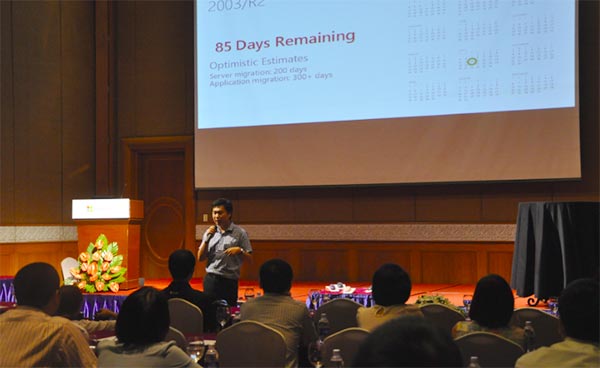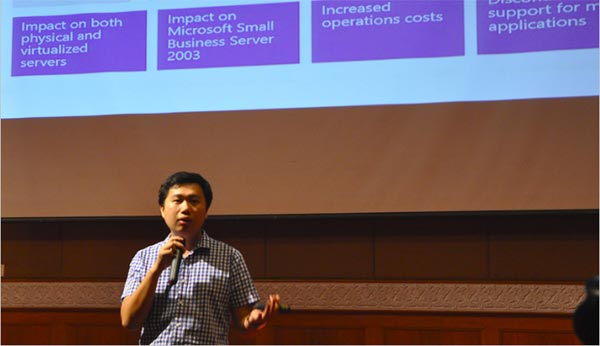An unprecedented opportunity for IT modernisation
- Ngoc Huynh
The end-of-support for Windows Server 2003 in less than three months is an unprecedented opportunity for organisations to modernise their IT infrastructure to harness cloud, mobility, IoT, Big Data and other disruptive technologies. The aging Windows Server 2003 is not equipped to safely operate in a new digital world filled with increasingly complex security threats. Tran Hung Vy, IT specialist of Microsoft Vietnam shares with VIR’s Hoang Mai about this issue.

Why is Microsoft ending support for Windows Server 2003?
Retiring a product is a normal part of the product lifecycle. WS03 (WS03) was released in April 2003, and was a great release for its time. But today we live in a mobile first, cloud first world and virtualisation is the default model. By migrating from WS03, organisations can take advantage of modern technology to protect their environments, use virtualisation to reduce server sprawl, take advantage of hybrid and public cloud options for their applications, and reduce IT burden with Office 365 and other services.
What does end of support mean for customers?
Customers who currently run Windows Server 2003 need to take the time to identify which of their applications are impacted, and actively move forward with migration planning. Customers have great options across the new Windows Server, Microsoft Azure, hosting partners, and Office 365. Microsoft and partners have tools and guidance to help.

What are the risks of continuing to run an unsupported product?
Running WS03 in your environment after the product’s end of support date may expose your business to risks, such as:
Security: As the threat landscape evolves, unsupported and unpatched environments are vulnerable to security risks. As a frame of reference, 37 critical updates were released in 2013 for WS03.
Compliance: If your company is still using WS03, this may result in an officially recognised control failure by an internal or external audit body, leading to suspension of certifications, and/or public notification of the company’s inability to maintain its systems and customer information.
Higher total cost of ownership: Staying put costs more in the end. Hardware maintenance and advanced security systems will drive up costs.
Lower competitiveness: Failing to take advantage of new technologies and application opportunities can hinder a company’s success.
What are some of the benefits of migrating?
Customers will ensure the protection of their servers with continued security updates and patches from Microsoft. More than that, by taking advantage the new Windows Server, Microsoft Azure and/or Office 365, customers will be able to go beyond the resources of their on-premises data centres to protect servers with continued security updates and patches from Microsoft.
Other advantages relate to reducing server sprawl with best in class virtualisation and hybrid cloud capabilities; gaining efficiencies and improve innovation with the choice of deploying workloads and applications on-premises or in the cloud; and boosting employee productivity while reducing burden on IT.
How should small and medium businesses think about Windows Server 2003 migration vs. large enterprise?
Small & medium businesses face many of the same challenges as large enterprise due to legacy line-of-business applications that need to be assessed and migrated.
Migration presents an opportunity to discover the right balance of simplicity, flexibility, and cost for their specific business taking advantage of enterprise-grade features at start-up prices by hosting applications in the way that bests suits their business and cost structure, whether on-site or in the cloud; growing efficiently and getting only what they need, when they need it, by leveraging on-line service alternatives like Office 365 and Microsoft Azure; and getting their work done anywhere and working together easily with the latest cloud-based mobility and productivity solutions.
By engaging a trusted partner early, these businesses can demystify their aging technology and understand their migration risks and opportunities; leverage the right balance of on-premises server and hybrid cloud alternatives that can actually reduce the up-front costs of migration; and safeguard their business and be prepared for the unexpected while also protecting and controlling their data.
Source : http://www.vir.com.vn/
